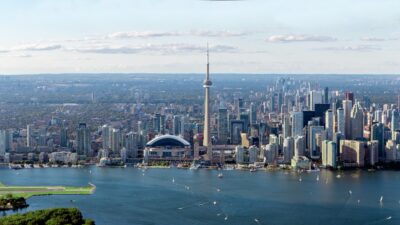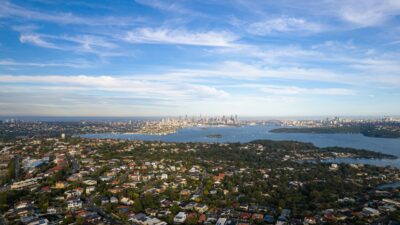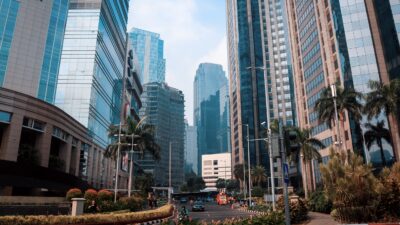Peter Phibbs, Somwrita Sarkar and Roderick Simpson

Our big cities are engines of inequality, so how do we fix that?
Australia’s global cities are a very large part of the nation’s economic success, but they are also generating significantly unequal incomes. Our recent research found that as Australian cities have grown, their income inequality has increased.
Cities provide many social and cultural opportunities and allow large numbers of people to stay connected. But bigger is better only if we can make it better for everyone.
We propose a solution: rather than concentrate activity around a single city centre, we need to develop multiple centres of activity – polycentric cities.
How are city size and incomes related?
Large cities, particularly global cities, are great sources of wealth and income generation. Their impacts on inequality, though, are less positive.
Much recent research has focused on measuring the relationship between city size and income and wealth generation. Various studies show that as cities increase in size, income and wealth grow “superlinearly”. This means that if the city size grows by 10%, income and wealth generation grow by more than 10%.
The benefits of large cities to the economy overall are well recognised. The most significant economic engines of many countries are one or two of the largest cities – think New York for the US, London for the UK, Sydney and Melbourne for Australia.
Large cities may be where growth and wealth are concentrated. And, by inference, average quality of life is improved. But the uneven distribution of wealth among residents is of concern.
A reasonable question might be whether cities, which many regard as humankind’s greatest invention, are machines for concentrating wealth inequitably. Is there any relationship between city size and income distribution?
We investigated this relationship across the entire spectrum of Australian cities. Using income distribution data from the 2011 Census across all the 101 significant urban areas, or “cities”, we did find a superlinear relationship. That is, overall, as city populations increased, total income did increase by more than the rate of population growth.
Bigger is better for the rich
We also analysed the proportion of households in different income bands. This analysis showed that while income growth increased as Australian cities got larger, this was concentrated in the upper income categories.
The Australian Bureau of Statistics defines ten income categories, ranging from lowest to highest incomes per capita, with people counts in each category. We found that incomes of poor and middle-income categories grow in proportion with city size, or more slowly. Those of the higher-income categories grow disproportionately faster.
Every citizen should be concerned about this trend. If total incomes and the incomes of top earners grow faster than city size, but not those of lower income earners, then most of the income that makes bigger cities richer is only going to the top earners.
Why do cities concentrate wealth?
This is probably not a surprising finding. Large cities attract many economic activities, particularly those in financial services, that can generate very large incomes. However, it highlights an issue that has received increasing attention in recent years – the significant increases in inequality in many Western economies.
While our research was largely a data-driven exercise, it does help us think about what might be some of the sources of inequality in our cities and the geography of that inequality. What policy response might help to counter this characteristic of increased city size?
The agglomeration and spillover effects of clustering related businesses, particularly finance and business service and “knowledge workers”, is well recognised, but these beneficial effects are indeed highly concentrated. An extensive global review of agglomeration in 2014 noted that “agglomeration economies do not spill over much space”.
How do we spread the benefits?
As big cities like Sydney and Melbourne expand, it will be very important to establish and support clusters of activity away from the principal city centre. Polycentric cities are more likely to achieve more equitable access to higher-paying jobs.
Additionally, it will be important to establish spatial policies that support a mix of higher, middle and lower-income jobs in business districts to prevent the agglomeration of the super-rich in pockets of the city.
This has implications for establishing housing market stability (encouraging a good spatial mix of all housing types in the vicinity) and efficient commuting (middle-income or poorer people not needing to travel long distances for work).
This has been a strategic planning objective for decades. Yet only now, in Sydney’s case, does the city’s economic geography have the potential to be significantly rebalanced. One example would be the development of a new airport in western Sydney.
Proximity to the airport is likely to stimulate investment in other economic activities. Population demand itself combined with the development of the “second city” of Parramatta, which is now capitalising on its geographic centrality, and will become more pronounced as the west develops.
The development of a “third city” centred on the airport, but building on a network of existing centres, has the potential to significantly change the distribution, accessibility and types of employment across the city.
Housing policy has a critical role to play
If we want to tackle inequality in our cities, housing is a very good place to start.
As city housing markets become more expensive, households on lower and moderate incomes spend an increasing proportion of their incomes on housing. The number of locations where they can live in the city becomes smaller, especially when certain pockets show agglomerations of super-rich.
The costs of housing mean the amount of spare income those on moderate and low incomes can invest in themselves and their children to improve their employment prospects (what economists call investing in human capital) becomes smaller. The educational outcomes for their children are often poor. Also, because of rising transport costs, the number of potential jobs they can access gets smaller.
This is why developing polycentricity is so critical.
To reduce inequalities in cities, it is also important that we spread affordable housing out across the city. Proposed inclusionary zoning provisions in the new Sydney District Plans, while modest, are a good first step.
Whether such measures will be sufficient to counter the inherent tendency for income inequality to increase non-linearly as city size grows remains to be seen.
Economic processes will take their own course: generally the larger the agglomeration, the higher the probability of further growth. However, recognising and reducing spatial inequality and changing the economic geography of the city should be planning’s role.
And finally, there is the question of city size distributions, and focusing on the growth of regional and smaller cities, instead of putting every cent of focus on our biggest cities. These are, clearly, very long-term goals in the current environment.
This article was originally published on The Conversation. Read the original article. Please refer to The Conversation’s republishing guidelines before republishing this article.
Image: Stilgherrian
Peter Phibbs is a geographer, planner and social economist with extensive experience in program evaluation, financial analysis and cost benefit analysis. He has over twenty years’ experience undertaking housing research. Currently he is the Chair of Urban and Regional Planning and Policy at the University of Sydney and also Director of the Henry Halloran Trust at the same University.
Somwrita's research looks at complex systems and networks in various design, technological and biological domains, and developing models and methods to better understand them.
Rod Simpson joined the University of Sydney in 2011. He is the Director of the Urban Design and Master of Urbanism programs, and is a founding partner of the architectural and urban design practice simpson+wilson.
Share
We believe in open and honest access to knowledge. We use a Creative Commons Attribution NoDerivatives licence for our articles and podcasts, so you can republish them for free, online or in print.







